When Scorsese Met Ballhaus — the ’80s Collaboration that Redefined Their Careers (and Cinema)
- Oops!Something went wrong.Please try again later.
- Oops!Something went wrong.Please try again later.
- Oops!Something went wrong.Please try again later.
- Oops!Something went wrong.Please try again later.

In the fall of 1983, one could already make a plausible case for Martin Scorsese as one of the greatest living American filmmakers based on “Mean Streets,” “Alice Doesn’t Live Here Anymore,” “Taxi Driver,” “Italianamerican,” “The Last Waltz,” “Raging Bull,” and “The King of Comedy.” But as the holidays approached, Scorsese’s career was in trouble.
After establishing himself with a series of lean, mean masterpieces shot on tight schedules, the director’s productions had grown in a scale disproportionate to their financial success; “New York, New York,” “Raging Bull,” and “The King of Comedy” had all taken around a hundred days to shoot, and while all three are acknowledged as classics today, they received mixed reviews at the time and “Raging Bull” barely broke even at the box office — “New York, New York” and “The King of Comedy” were flat-out flops.
More from IndieWire
Pixar's 'Elemental' and Sony's 'No Hard Feelings' Debut on VOD Charts but Fail to Dominate
'RuPaul's Drag Race' Keeps Things Spontaneous with Rigorous Prep Work
Scorsese spent most of 1983 preparing what was intended to be his most ambitious and personal film yet, an adaptation of Nikos Kozantzakis’ controversial novel “The Last Temptation of Christ.” By Thanksgiving, the actors had been cast, the Middle Eastern locations had been scouted, the sets had been built and the period costumes made (Scorsese would later discover the shoes had been repurposed for the Richard Gere biblical epic “King David”).
Four days before shooting was scheduled to begin, Scorsese got the call that Paramount was pulling the plug; between the threat of protests from evangelical groups, the ballooning budget and schedule, producer Irwin Winkler’s recent box office failure “The Right Stuff,” Scorsese’s waning commercial fortunes and an overall decline in the power of the director since Michael Cimino’s “Heaven’s Gate,” the studio saw no upside to releasing Scorsese’s passion project — and a lot of potential risk.
The director spent a month trying to keep his movie together, bringing on a new producer (Jon Avnet, fresh off “Risky Business”) and cutting the schedule in half, but to no avail. Two days before Christmas, Barry Diller (the same executive who called Scorsese on Thanksgiving to tell him the picture was canceled) told Scorsese that “The Last Temptation of Christ” was officially dead. “We just don’t want to make it,” he said. “It’s not worth the trouble.”
As if that wasn’t enough to ruin Scorsese’s Christmas, he turned on the TV and heard “Entertainment Tonight” declare “The King of Comedy” the flop of the year. The filmmaker with more great movies on his résumé than any other of his generation wasn’t sure if he’d ever get to make another picture in Hollywood again.
Yet as with the protagonist of “Raging Bull,” it was impossible to keep Scorsese down. He knew that the answer to his problems was to get behind the camera as quickly as possible, and Paramount, feeling bad about the “Last Temptation” situation, offered him several projects: “Beverly Hills Cop,” “Witness,” “The Golden Child,” and the never made “Flashdance 2.” The director couldn’t muster up the necessary enthusiasm for any, and in any case, he sensed that if he were to survive in Hollywood, he would need to go back to ground zero: no more 100-day shooting schedules, no luxurious budgets, no excess of any kind. Scorsese was as hungry as when he made “Mean Streets,” and he needed to find something that would feed and reflect that hunger and bring back the propulsive energy of his early work.
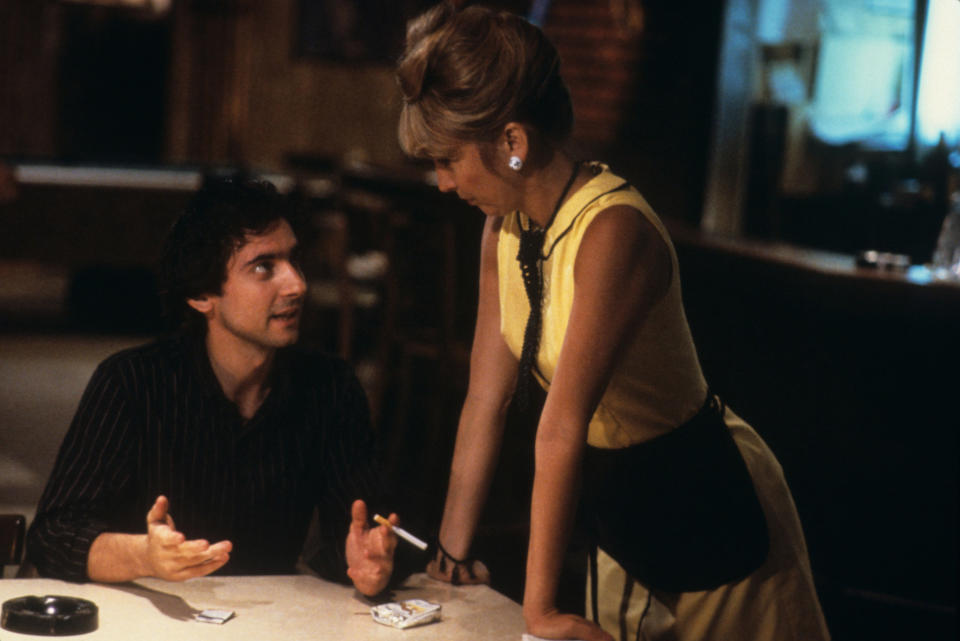
Scorsese’s salvation arrived in the form of “Lies,” a script by Columbia University student Joseph Minion that Amy Robinson, who had played Harvey Keitel’s girlfriend in “Mean Streets,” sent him. Robinson and her producing partner Griffin Dunne were trying to get the movie made as a vehicle for Dunne to star in, which meant it would have to be done for relatively little money; Dunne had appeared in “An American Werewolf in London” and a few other films, but was hardly a name.
“Lies,” which would become “After Hours,” was a pitch-black comedy about one man’s descent into an urban hell after an attempt at a one-night stand goes horribly wrong; a hilarious but unnerving study of anxiety and guilt, it provided not only the kind of contained parameters Scorsese was looking for (it all took place in one night and mostly one neighborhood) but themes and emotions he could sink his teeth into.
It also initiated the partnership that would rejuvenate Scorsese’s creative energies and come to define many of his greatest films to come. The director knew cinematographer Michael Ballhaus’ work from his collaborations with German director Rainer Werner Fassbinder, a filmmaker as famous for his speed as much as his talent (Fassbinder and Ballhaus shot one of their films, “Beware the Holy Whore,” in three days after the director fired his lead actor and had to scrap everything that had been filmed up to that point).
Dunne and Robinson knew Ballhaus personally, having worked with him on John Sayles’ “Baby, It’s You.” They thought Ballhaus and Scorsese would be a good match, but no one could have predicted the degree to which these two filmmakers would bring out the best in each other; Ballhaus might have been selected partly due to his ability to shoot quickly and cheaply, but he was the right cameraman for Scorsese for more profoundly artistic reasons, something that would become clear on their collaborations throughout the 1980s and beyond.
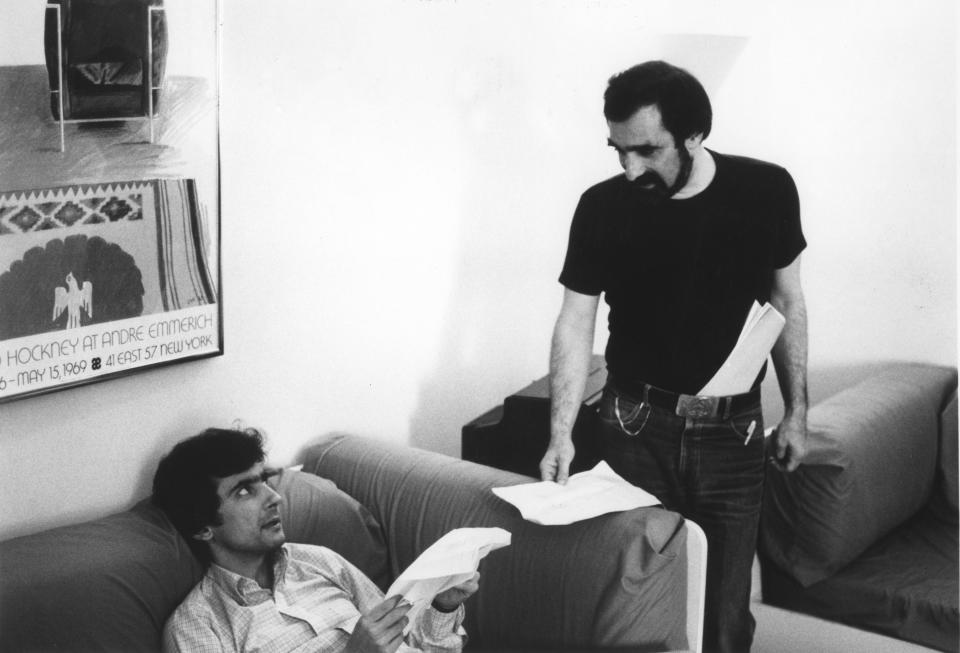
First, however, they had to prove they could make “After Hours” with the time and money allotted, shooting 16 set-ups a day when Scorsese had grown used to a maximum of five. For “After Hours,” he returned to the practice that had served him well on “Mean Streets” and “Taxi Driver,” drawing out every shot in advance and essentially making the movie in his head before production began.
To his delight, Scorsese found that Ballhaus was not only enthusiastic about the idea of a constantly prowling camera but kept pushing the director to take it further; the edges of the frame almost never stop moving, creating a sense of almost unbearable agitation and unease as Dunne’s Paul Hackett suffers one increasingly dangerous mishap after another. Ballhaus loved Scorsese’s willingness to push film form beyond conventionally motivated angles. “In the coffee shop, the camera jumps over Rosanna Arquette to Griffin as if it were a hawk grabbing this guy,” Ballhaus told Scorsese biographer Mary Pat Kelly. “These moments look easy on screen, but it’s not so easy to figure out how to execute them.”
Ballhaus knew not only how to execute Scorsese’s subjective camera moves but how to do them without breaking the bank; utilizing high-speed film stocks and relying on available light whenever possible, he pulled off those 16 set-ups a day without compromise. Indeed, one of the most remarkable things about “After Hours” is that even though it was Scorsese’s lowest-budget narrative feature since “Taxi Driver,” it doesn’t feel like it’s straining against its resources; it’s as fully realized as any of the Hitchcock classics that inspired it (the movie plays like a riff on Hitchcock’s “wrong man” thrillers that’s both funnier and more terrifying than its influences).
Although the script did not originate with Scorsese, he was (and is) constitutionally incapable of making a film that doesn’t pulsate with his own preoccupations and obsessions; in addition to the sexual guilt and neuroses that had become familiar strains in movies like “Who’s That Knocking at My Door” and “Taxi Driver,” “After Hours” has an urgency thanks not only to Scorsese’s need to prove himself but his ability to project himself onto the Paul Hackett character. It’s not a stretch to see, in Hackett’s brutal run of bad luck, a thinly veiled autobiography reflecting the collapse of “The Last Temptation of Christ.”
“After Hours” was only a modest commercial success, but it won the Best Director prize at Cannes and proved to the industry — and more importantly, to Scorsese himself — that he was still at the height of his artistic powers and that those powers didn’t require massive budgets. He took a break from Ballhaus to shoot an episode of the TV series “Amazing Stories” with cinematographer Robert M. Stevens (another step toward showing Hollywood that he could “behave” within the system), then received an intriguing invitation from actor Paul Newman, who wrote Scorsese a fan letter and asked him to direct a sequel to his 1961 pool-room drama “The Hustler.”
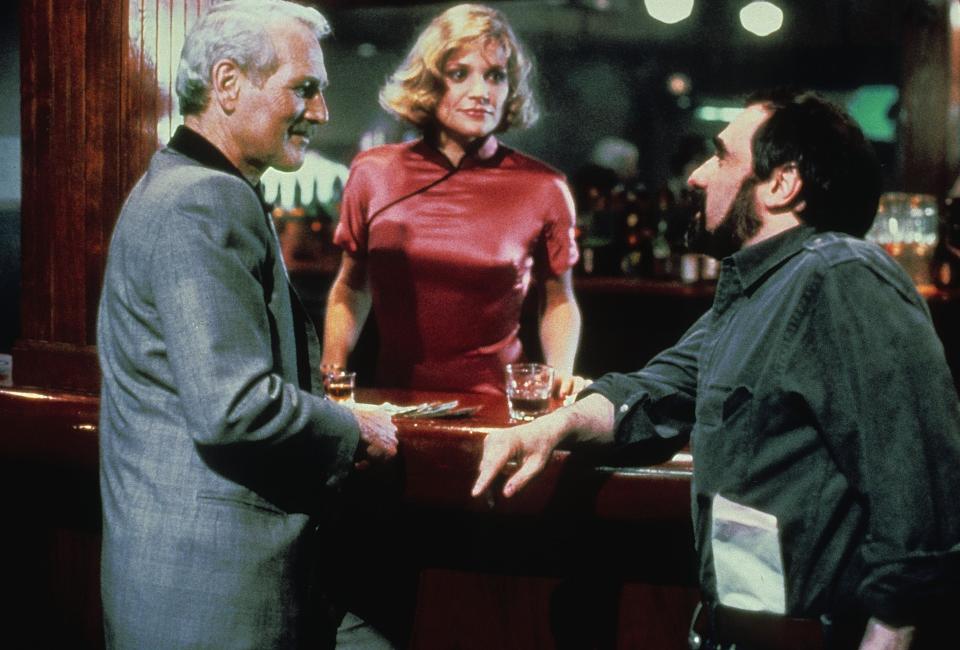
That sequel, “The Color of Money,” gave Scorsese and Ballhaus the perfect opportunity to apply what they had learned together on “After Hours” to a commercial project with big movie stars — not just Newman but Tom Cruise, whose “Top Gun” would be released while “Color of Money” was in post. Better yet, the milieu of urban pool halls and street-smart strivers and hustlers was one that Scorsese felt comfortable in, and which allowed him and Ballhaus to indulge in an endless array of fast and fluid camera moves to capture the dynamism of the games. The style is reminiscent of “After Hours” in both the naturalistically lit night exteriors and the ceaselessly gliding camera, but the slight increase in speed and the change in setting give the same approach different effects.
In “After Hours” Ballhaus and Scorsese’s audacious methodology, in which the camera is motivated less by the action than by internal tensions, expresses dread and apprehension; in “The Color of Money” it expresses the verve of Eddie Felson and Vincent Lauria (Cruise) and that of the filmmakers as they apply their guerrilla techniques to a studio crowd-pleaser.
“The Color of Money” also exhibits Ballhaus’ astonishing ability to make difficult shots look easy — not just in terms of movement but composition. The film is filled with reflective surfaces that Ballhaus’ camera elegantly slides around without ever making itself seen; it’s reminiscent of his work on Fassbinder’s “Chinese Roulette,” and looks forward to the nightclub scenes of a great later collaboration with Scorsese, “Goodfellas.”
That film would become famous for moments like a Steadicam following Ray Liotta and Lorraine Bracco into the Copacabana in one intricate shot — moments that Ballhaus played a key role in devising. “[Assistant director] Joe [Reidy] and Michael Ballhaus really laid out the Copacabana shot for me,” Scorsese told critic Glenn Kenny in his book “Made Men.” “We knew where we were gonna go, and I’d go in the trailer and come back, and they’d have pieces of action plotted out, a little here a little there, and then ultimately by the end of the day we had it.”
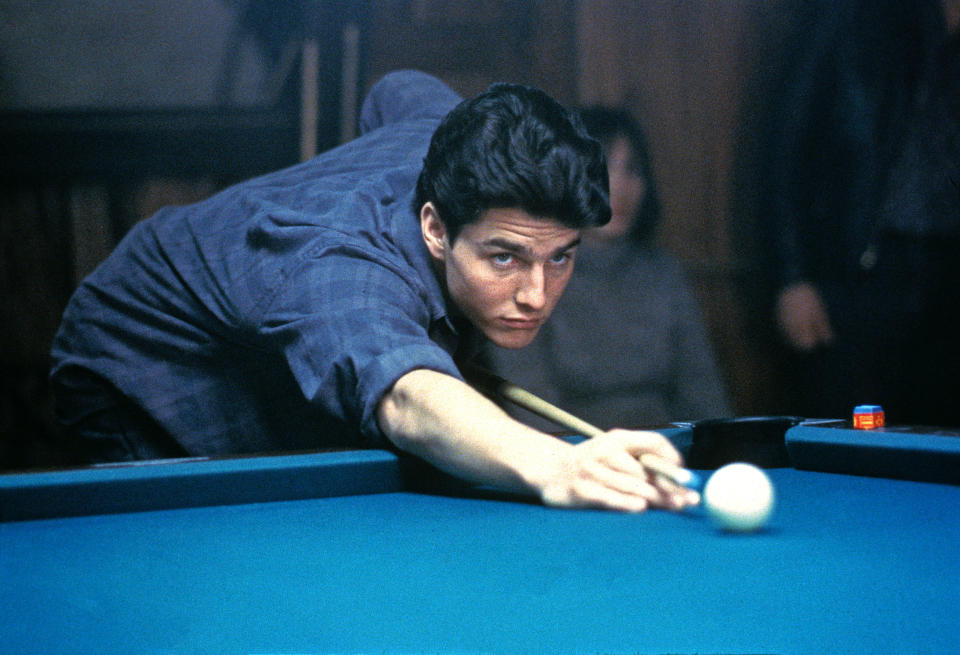
In his 1995 documentary “A Personal Journey with Martin Scorsese Through American Movies,” Scorsese talks about how the directors of the classical Hollywood studio system had to either “smuggle” their ideas into conventional genre projects or adopt a “one for me, one for them” strategy in which personal projects would alternate with studio assignments. With “The Color of Money,” Scorsese was able to make one for them and one for him, a smoothly engineered entertainment machine in which Paul Newman’s Eddie Felson was as apt a Scorsese stand-in as Paul Hackett. The whole movie revolves around the question of how Felson gets back in the game after he was almost out for good — just like Scorsese after the “Last Temptation” debacle — and just as Scorsese’s future was still uncertain, “The Color of Money” ends with a question mark. Felson plays one more game against Vincent, but we never see the result.
The upshot of “The Color of Money,” which Scorsese shot in 49 days for a relatively lean $13 million, was that the director could return to “The Last Temptation of Christ.” Released in 1988, five years after its intended start date and 16 years after Barbara Hershey first gave Scorsese the novel on the set of “Boxcar Bertha,” “The Last Temptation of Christ” remains one of the crowning achievements of Scorsese’s career and one of the greatest American films of its century, a dense examination of complex theological, moral, and philosophical issues that has a paradoxically nimble, lively quality. That quality comes partly from Scorsese’s unorthodox approach to the conventions of the religious film, in which he treats the disciples like the guys hanging around the pool halls in “Mean Streets” and “The Color of Money,” but mostly it comes from the full fruition of the techniques Scorsese and Ballhaus had been developing on their earlier collaborations.
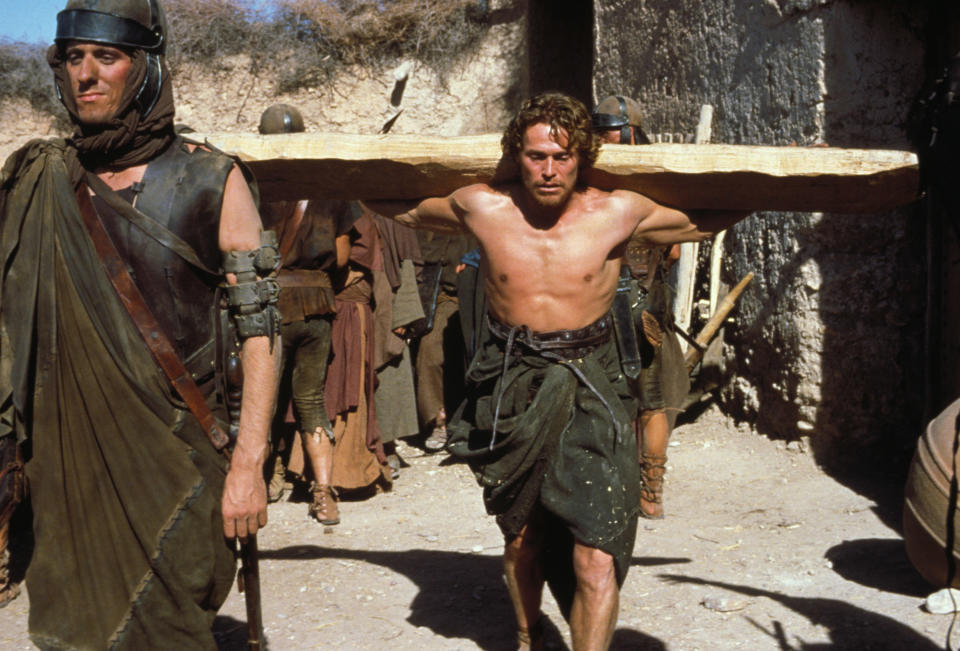
When Scorsese first planned to make “Last Temptation,” the projected costs crept into the high teens; in 1988, the only way he could get it made was on a $7 million budget with a compressed shooting schedule. After dreaming of making the film for so long Scorsese was occasionally depressed on set, but it was Ballhaus who told him that this was the way “The Last Temptation of Christ” was meant to be made; the discipline it required not only helped them hone their visual language but put them more in touch with the themes of sacrifice and revolution at the heart of the picture. Once again the camera had a restless energy, this time lurking around and above Jesus (Willem Dafoe) in an effort to convey his doubts and insecurities.
“We adopted a very fluid and almost nervous way of moving the camera,” the director said in “Scorsese on Scorsese.” “Because He was unsure of Himself, the camera would be hiding and creeping around Him, caught between following Him and, at the same time, trying to pull back far enough so that you could see the landscape.” Although Scorsese always had a predilection for overhead shots (most famously in the aftermath of the climactic shoot-out in “Taxi Driver”), he used more of them than ever before in “Last Temptation.” The camera constantly swoops down on Jesus, prying into His life and mind, torturing Him — giving visual expression to the notion of “God as a headache” that Paul Schrader’s script opened with.
Yet these are not the grandiose crane shots of a Cecil B. DeMille; Scorsese and Ballhaus couldn’t afford such equipment. Instead, they worked with a jib arm that could only rise around a dozen feet, an economic restriction that Ballhaus typically turned into an aesthetic asset since the limitation meant “The Last Temptation of Christ” had to remain more earthbound than the sweeping Biblical epics of the past. There’s less distance, both physically and emotionally, between the audience and God in Scorsese’s film than in a movie like “The Ten Commandments” or “The King of Kings,” which is part of what gives “The Last Temptation of Christ” its power. The earthbound, low-budget aesthetic also gives “The Last Temptation of Christ” an immediacy and a sense of anthropological reality — it makes it seem as though this is the way people really lived at the time, a quality that would be instrumental in the artistic and commercial success of Scorsese and Ballhaus’ first collaboration of the 1990s, “Goodfellas.”
That movie would change everything for Scorsese, putting him back in the driver’s seat on a well-resourced studio film for the first time since “King of Comedy” and paving the way for the decades of high points that would follow, several of them photographed by Ballhaus. By the time the director and cinematographer got to work on “The Age of Innocence,” “Gangs of New York,” and “The Departed,” the shooting schedules and budgets had risen again, but the discipline and the energy of the partners’ ’80s work remained.
“After Hours,” “The Color of Money,” and “The Last Temptation of Christ” stand on their own and don’t need any further justification, but the fact that they gave us not only three great films of the 1980s but allowed Scorsese to get back to work and forge the path to the phenomenal 30-plus-year run that followed makes them a trilogy to be treasured and savored.
Best of IndieWire
Where to Watch This Week's New Movies, from 'Blue Beetle' to 'The Adults'
The 50 Best Sexy Movies of the 21st Century, from 'Spring Breakers' to 'X'
Sign up for Indiewire's Newsletter. For the latest news, follow us on Facebook, Twitter, and Instagram.

